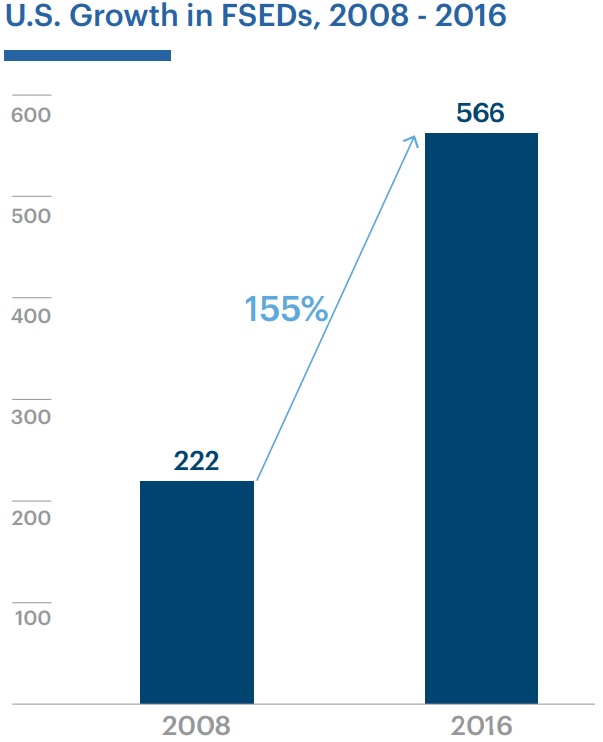
nuttapong punna/istock via Getty
Freestanding Emergency Departments Cost 22 Times More Than Doctor
A case study of freestanding emergency departments in Texas shows shifting care to doctors and urgent care centers could save $800 million annually.
Shifting care from freestanding emergency departments to physician offices and urgent care centers would save over $3,000 per visit, showed a recent brief from the managed care company UnitedHealth Group.
The company found that freestanding emergency departments cost significantly more than other lower cost care sites for common, non-emergent conditions. But consumers do not always realize that seeking care at the facilities will result in higher costs.
Freestanding emergency departments are hospital-owned or independent facilities that are licensed to deliver emergency medical care despite being separate from a hospital. The standalone departments differ from their hospital-based counterparts because the facilities do not provide critical services like trauma, stroke, and heart attack care. Most departments do not even accept ambulances or have an operating room on site.
Stakeholders intend for freestanding emergency departments to deliver less intense emergency medical care for consumers with limited emergency care access, and providers are increasingly investing in the hospital alternative.
UnitedHealth Group pointed out that there are 42 percent more freestanding emergency departments in operation compared to 2015 and 155 percent compared to 2008.
“Recent national growth in freestanding EDs (FSEDs) – both hospital-owned and independent – is a result of consumer demand for convenient care options, low barriers to entry, and high profit potential,” the brief stated.

The majority of the 566 freestanding emergency departments currently open are located in Texas, which was one of the first states to start licensing the facilities in 2010. Texas currently has 266 freestanding emergency departments and about one-quarter of all emergency department visits in the state occur at these standalone facilities.
For these reasons, UnitedHealth Group studied the utilization and costs of freestanding emergency departments in Texas. The company found that the alternative emergency care setting is not always living up to its potential.
Many hospitals and providers open a freestanding emergency department to increase consumer access to emergency services, especially for those in underserved communities. But data shows freestanding emergency departments are largely located in affluent communities that have access to other providers.
In Texas specifically, the standalone facilities are highly concentrated around metropolitan areas and zip codes with:
- Higher median incomes
- Higher rates of private healthcare insurance coverage
- More physician offices
- More hospital-based emergency departments
- More physician visits
- Greater healthcare spending
The rapid proliferation of freestanding emergency departments may be confusing consumers. Consumers typically go to the standalone facilities for non-emergent conditions that could have been treated at a physician office or urgent care center.
The five most frequent diagnoses at Texas freestanding emergency departments were fever, acute bronchitis, acute pharyngitis (sore throat), acute upper respiratory infection, and cough.
Seeking emergency medical care for the five common conditions ended up costing consumers significantly more, the brief revealed.
In Texas, the average cost at a freestanding emergency department was 22 times more than at a physician office and 19 times more than at an urgent care center for ten non-emergent conditions typically treated at the standalone emergency facilities.

To break it down, UnitedHealth Group found that lab, pathology, and radiology services for the common conditions averaged $785 at freestanding emergency departments (FSEDs) versus just $26 at a physician office.
“One factor that contributes to, but does not fully account for, the high cost of care at FSEDs is the facility fee, which is intended to cover the overhead of large, full-service hospitals,” the brief stated. “An estimated 93 percent of Texas FSEDs charge a facility fee, which increases the average cost of treatment at FSEDs by over $1,000 per visit.”
Freestanding emergency departments are significantly more expensive than other appropriate care settings. But consumers have trouble understanding the difference between urgent care centers and freestanding emergency departments, the brief added.
Urgent care centers are another alternative care setting that is rapidly growing to meet the consumer demand for convenient care. The centers offer on-demand care for non-emergent conditions.
The number of urgent care centers operating as of November 2018 reached 8,774, up by eight percent compared to the previous year, the Urgent Care Association recently reported.
Both freestanding emergency departments and urgent care centers are helping consumers who are not affiliated with a primary care physician or hospital, as well as those seeking immediate care for non-life-threatening conditions.
However, consumers are paying more for freestanding emergency department care. Consumer financial responsibility averaged over $800 at Texas facilities, while consumer bills averaged less than $100 at physician offices or urgent care centers for the same condition.
“While some insured individuals may face only a copayment after an FSED visit, those who have not reached their annual deductible may be responsible for the full cost,” UnitedHealth Group warned.
In light of the data, the company found that the healthcare industry can dramatically reduce costs to consumers and the system at large by shifting care to lower-cost care sites.
In Texas alone, freestanding emergency departments have approximately 1.4 million visits each year for which 20 percent are for ten non-emergency conditions.
“Shifting these visits to physician offices and urgent care centers would reduce annual healthcare spending by over $800 million,” the company revealed.







